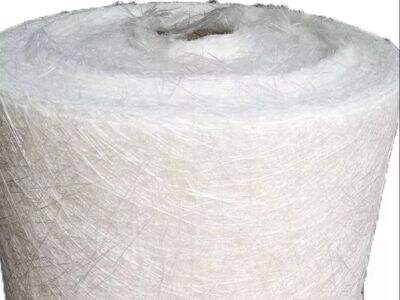It is very important to have strong and sturdy materials, especially in things like boats and cars which are required to be safe as well as endure long. A good way to make these strong materials is with a special type of material called chopped strand mat, or CSM for short. CSM is created from several individual layers of fiberglass that has been stitched together, to make it strong. CSM stacked in the correct order provides our materials with even more strength and durability, making them resistant to abrasion.
Weight of Chopped Strand Mat
When we hear CSM it seems to have a lot of weights. So because the weight of CSM speaks to how much fiberglass is squished into one area off every "strand" that makes up a part of mat. Thicker, more difficult to handle; normally heavier CSM is stronger. Working from lighter weight CSM even allows us to work our way up on the thickness of material. In this manner, we avoid weakening the material despite its light weight — a useful trait for many applications.
How Fibers Should Be Placed?
A further factor in producing impact-resistant materials with CSM is the fiber layout within each layer. This can result in low spots where the material does not fuse together well because all of the fibers within one layer were oriented parallel. The fibers can be arranged in a different orientation with respect to each other layer, which helps using fibrous composites. We can make the bond between the fibers and resin even stronger by changing how they are oriented.
Several Methods to Orient CSM Fibers Cross-ply. This is another common method. In this way, each layer consists of the fibers muster at a 90-degree angle to one another. Such an arrangement works to help disperse the stress and leads making it less likely that one part will shatter. There is also a way, known as unidirectional. This means that all the fibers belonging to one layer are oriented in a direction,—Straight, in which they were laid. This is especially helpful when we are designing parts with the need for a certain strength or stiffness.
Stiffening and Tougher Materials
CSM laminates are required for most applications in order to achieve stiffness and durability. Stiffness — stiff materials prevent bending when pressure is applied Durability — refers to how long a material will last before breaking down or losing strength What this basically entails is that by changing how you stack CSM layers, you can get higher or lower stiffness and durability for your materials.
Wrapping the CSM layers diagonally. As an example, which could improve a stiffer and less prone to bending or flexing part. If we add more layers of CSM to stress areas, on the other hand, this can help but so is adding that little bit all around where you expect potential cracking or breaking over time.
Avoiding Air Pockets
One problem with combining multiple layers of CSM is that an air pocket could be created between those layers. The bonding between the layers is worn down somewhat by the presence of air pockets and so that makes it less strong overall. They can also result in varying wall thicknesses which may require to part design under certain loads.
This has led to use of a method called “wet layup” which allows them liquid resin or glue can hold the CBC fibers together during manufacturing — minimizing any air holes and ensuring thickness consistency. The wet-on-wet lay-up — in which each layer of CSM is applied before the one beneath it has cured (except for co-curing with prepare) on later layers especially. This densities the fibers and gives them a better pore filling to prevent voids.
When you lay each layer of chopped strands, it is essential to roll or use a second tool in order to get the resin evenly distributed. That way it will not be too difficult to force out any air that gets trapped in and the thickness of the material will stay consistent all over.
Choosing the Right Techniques
CSM is a complex subject when dealing with material manufacture. Every project calls for different strength, stiffness and load-bearing properties; every shape means a new dimension to include.
The proper orientation, as well as the layering strategies that are best for each application, can contribute to optimal results. For example, it may involve the use of different weights related to chopped strand mat or various orientations in relation with fibers as well as layering patterns based on what would be required for a given application.
Quality CSM for your Application from This Renowned Collaboration — Are you Looking to Let it Fly High? AMP is Professional. Our seasoned team is available to guide you in selecting the proper materials and methods that will allow for your requirements in strength, stiffness and long term durability. If you are building a boat, automotive parts or any other composite structure we have the knowledge and know how to help in your endeavor.

 EN
EN
 AR
AR
 BG
BG
 HR
HR
 CS
CS
 DA
DA
 NL
NL
 FI
FI
 FR
FR
 DE
DE
 EL
EL
 HI
HI
 IT
IT
 JA
JA
 KO
KO
 NO
NO
 PL
PL
 PT
PT
 RO
RO
 RU
RU
 ES
ES
 TL
TL
 IW
IW
 ID
ID
 SL
SL
 VI
VI
 SQ
SQ
 TH
TH
 AF
AF
 MS
MS
 HY
HY
 KA
KA
 JW
JW
 LA
LA
 NE
NE
 PA
PA
 MY
MY
 KK
KK
 TG
TG
 UZ
UZ

